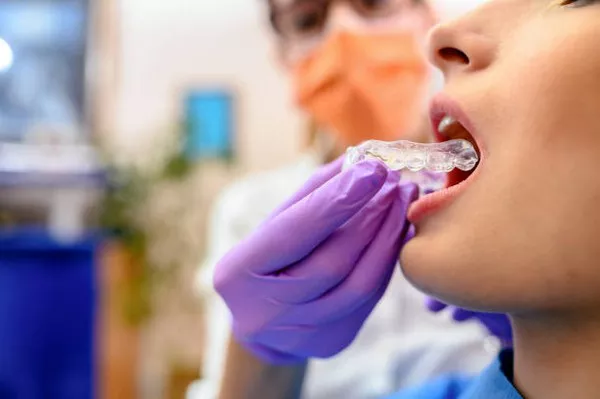Periodontal disease, commonly known as gum disease, is a serious condition that can lead to significant oral health issues, including tooth loss. However, the good news is that with early intervention and proper treatment, it is possible to save teeth even in the presence of periodontal disease. This article will delve into the causes, progression, and treatment of periodontal disease, emphasizing that teeth can indeed be preserved with timely and appropriate care.
Understanding Periodontal Disease
Causes and Progression
Periodontal disease is primarily caused by bacterial plaque, a sticky, colorless film that constantly forms on teeth. When plaque is not adequately removed through regular brushing and flossing, it hardens into tartar (calculus), which can only be removed by a dental professional. The presence of tartar and bacteria can lead to gum inflammation, known as gingivitis, the mildest form of periodontal disease.
As the disease progresses, the inflammation can spread below the gum line, causing pockets to form between the teeth and gums. These pockets collect more bacteria and plaque, leading to further infection and inflammation. Over time, this can destroy the tissues and bone that support the teeth, resulting in periodontitis, the more severe form of periodontal disease. Periodontitis can lead to significant bone loss and, eventually, tooth loss if not treated promptly.
Stages of the Disease
Gingivitis: This is the earliest stage of periodontal disease, characterized by red, swollen gums that may bleed easily during brushing or flossing. Gingivitis is reversible with good oral hygiene and professional dental care.
Mild Periodontitis: In this stage, the inflammation extends to the bone, causing minor bone loss. Patients may notice slight pocket formation and early signs of gum recession.
Moderate Periodontitis: At this point, there is increased bone loss, deeper pockets, and more noticeable gum recession. Teeth may start to feel loose.
Severe Periodontitis: This stage involves significant bone loss, deep pockets, severe gum recession, and loose teeth. Patients are at high risk of tooth loss.
Symptoms
Common symptoms of periodontal disease include:
- Red, swollen, or tender gums
- Bleeding gums during brushing or flossing
- Persistent bad breath
- Receding gums
- Formation of deep pockets between teeth and gums
- Loose or shifting teeth
- Changes in bite or the fit of partial dentures
If you experience any of these symptoms, it is crucial to seek professional dental help promptly to prevent further damage and preserve your teeth.
The Good News: Teeth Can Be Saved
Early Intervention
One of the most encouraging aspects of periodontal disease treatment is that early intervention can significantly improve outcomes. When periodontal disease is detected and treated in its initial stages, the chances of saving teeth are much higher. Regular dental checkups play a crucial role in early detection, allowing for timely and effective treatment.
Successful Treatment
There are numerous success stories and statistics highlighting the effectiveness of periodontal treatment. For instance, studies have shown that non-surgical treatments like scaling and root planing can effectively manage mild to moderate periodontal disease, reducing inflammation and pocket depths. With proper care, many patients can retain their natural teeth for a lifetime.
Treatment Options
Several treatment options are available to address periodontal disease, including:
Scaling and Root Planing: This deep cleaning procedure removes plaque and tartar from teeth and root surfaces, reducing inflammation and preventing further damage.
Antibiotics: Antibiotics may be prescribed to combat bacterial infection and reduce inflammation. They can be administered topically or orally.
Surgical Procedures: For advanced cases, surgical treatments such as flap surgery, gingival grafting, bone grafting, and guided tissue regeneration may be necessary to restore gum and bone health.
See Also: How To Cure Pregnancy Gingivitis
Factors Affecting Tooth Preservation
Severity of the Disease
The severity of periodontal disease is a significant factor in determining the chances of saving teeth. Early-stage disease, such as gingivitis and mild periodontitis, is more easily managed and treated compared to advanced periodontitis. Therefore, early detection and intervention are critical for preserving teeth.
Patient’s Commitment
Patient commitment to treatment is essential for successful periodontal disease management. This includes adhering to prescribed treatment plans, maintaining good oral hygiene practices, and attending regular follow-up appointments. Consistent effort and dedication are crucial for preventing further damage and supporting healing.
Overall Health
General health conditions can also influence healing and treatment outcomes. Conditions such as diabetes, cardiovascular disease, and immune disorders can affect periodontal health and complicate treatment. Managing these underlying health issues and maintaining overall well-being can enhance the effectiveness of periodontal treatment and support tooth preservation.
Preventing Further Damage
Oral Hygiene
Maintaining good oral hygiene is fundamental for preventing further damage and supporting the healing process. This involves:
Brushing: Brush your teeth at least twice a day using a soft-bristled toothbrush and fluoride toothpaste.
Flossing: Floss daily to remove plaque and food particles from between the teeth and below the gum line.
Mouthwash: Use an antimicrobial mouthwash as recommended by your dentist to reduce bacteria and freshen breath.
Professional Cleanings
Regular dental checkups and professional cleanings are essential for monitoring periodontal health and maintaining treatment results. These appointments allow the dentist to:
- Assess the condition of the gums and bone
- Remove any accumulated plaque and tartar
- Provide additional treatments if necessary
Lifestyle Changes
Adopting healthy lifestyle changes can significantly impact periodontal health and treatment outcomes. These include:
Quitting Smoking: Smoking is a significant risk factor for periodontal disease and can impede healing. Quitting smoking can improve treatment outcomes and overall health.
Balanced Diet: Consume a diet rich in vitamins and minerals to support gum and bone health. Foods high in antioxidants, such as fruits and vegetables, can help reduce inflammation.
Managing Stress: Chronic stress can negatively impact oral health by contributing to inflammation and reducing the body’s ability to fight infection.
Consultation with a Dentist
While this information provides a general overview of periodontal disease treatment, it is essential to consult with a dentist for personalized assessment and treatment planning. Each patient’s situation is unique, and a dentist can provide tailored advice and interventions to address specific needs.
Personalized Assessment
A thorough assessment by a dentist or periodontist will include:
- Detailed medical and dental history review
- Comprehensive oral examination
- Diagnostic tools such as X-rays to evaluate bone loss and periodontal pockets
Based on this assessment, a personalized treatment plan will be developed to address the patient’s specific condition and treatment goals.
Treatment Plan
A personalized treatment plan will outline the specific steps necessary to manage periodontal disease and preserve teeth. This may include a combination of non-surgical and surgical treatments, along with recommendations for oral hygiene practices and lifestyle changes. Regular follow-up appointments will be scheduled to monitor progress and make any necessary adjustments to the treatment plan.
Conclusion
Periodontal disease is a serious condition that requires timely and effective treatment to prevent progression and preserve oral health. Understanding the causes, stages, and treatment options is essential for managing this disease effectively. Non-surgical treatments like scaling and root planing, antibiotics, and improved oral hygiene can manage mild to moderate cases. In more advanced stages, surgical interventions such as gingival grafting, bone grafting, flap surgery, and guided tissue regeneration may be necessary.
Regular follow-up appointments, good oral hygiene practices, and a healthy lifestyle are crucial for maintaining treatment outcomes and preventing recurrence. Always consult with a dentist for a personalized assessment and treatment plan tailored to your specific needs. By taking proactive steps and seeking professional care, patients can effectively manage periodontal disease and maintain a healthy, functional smile.
You Might Be Interested In



























